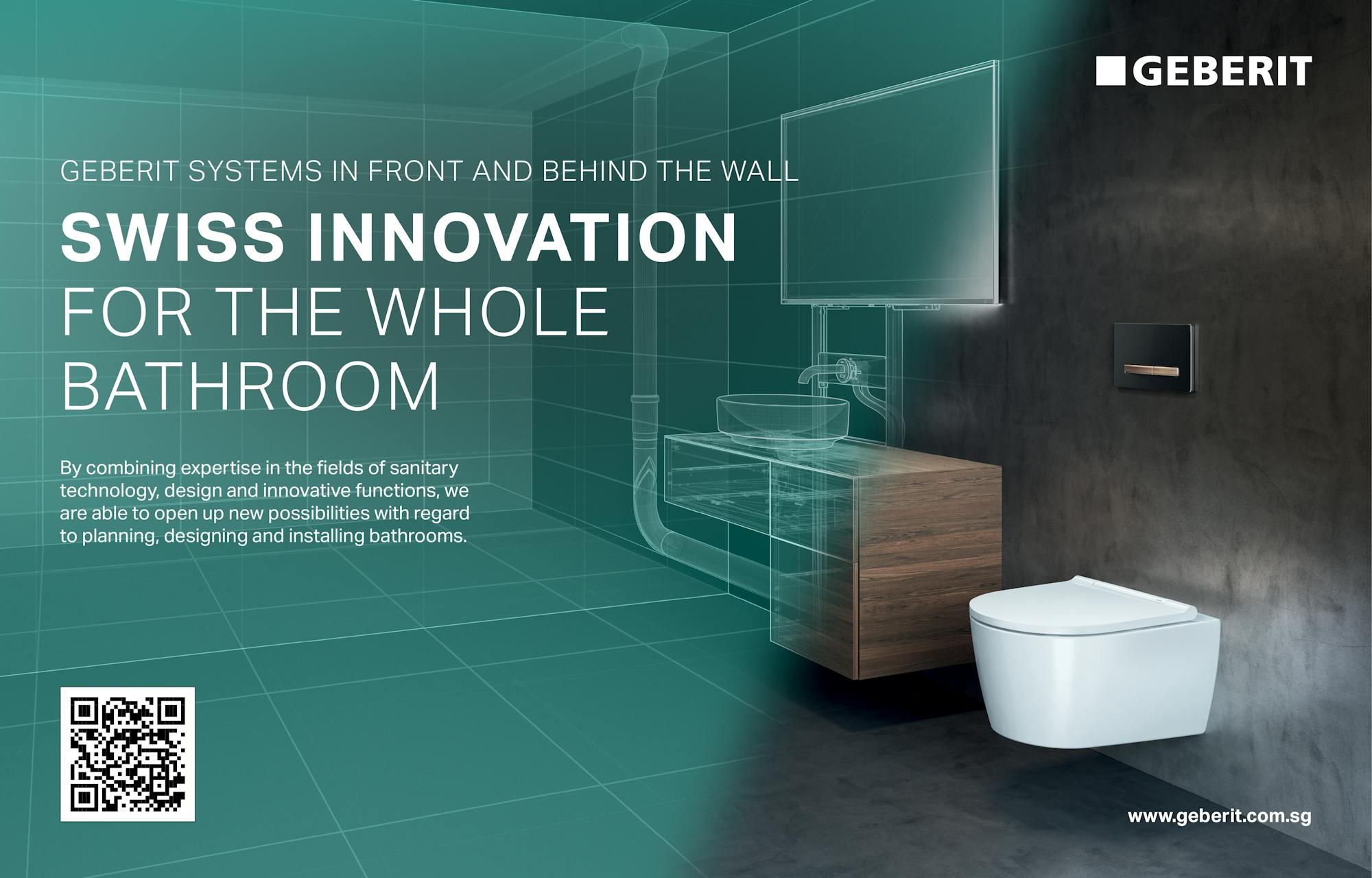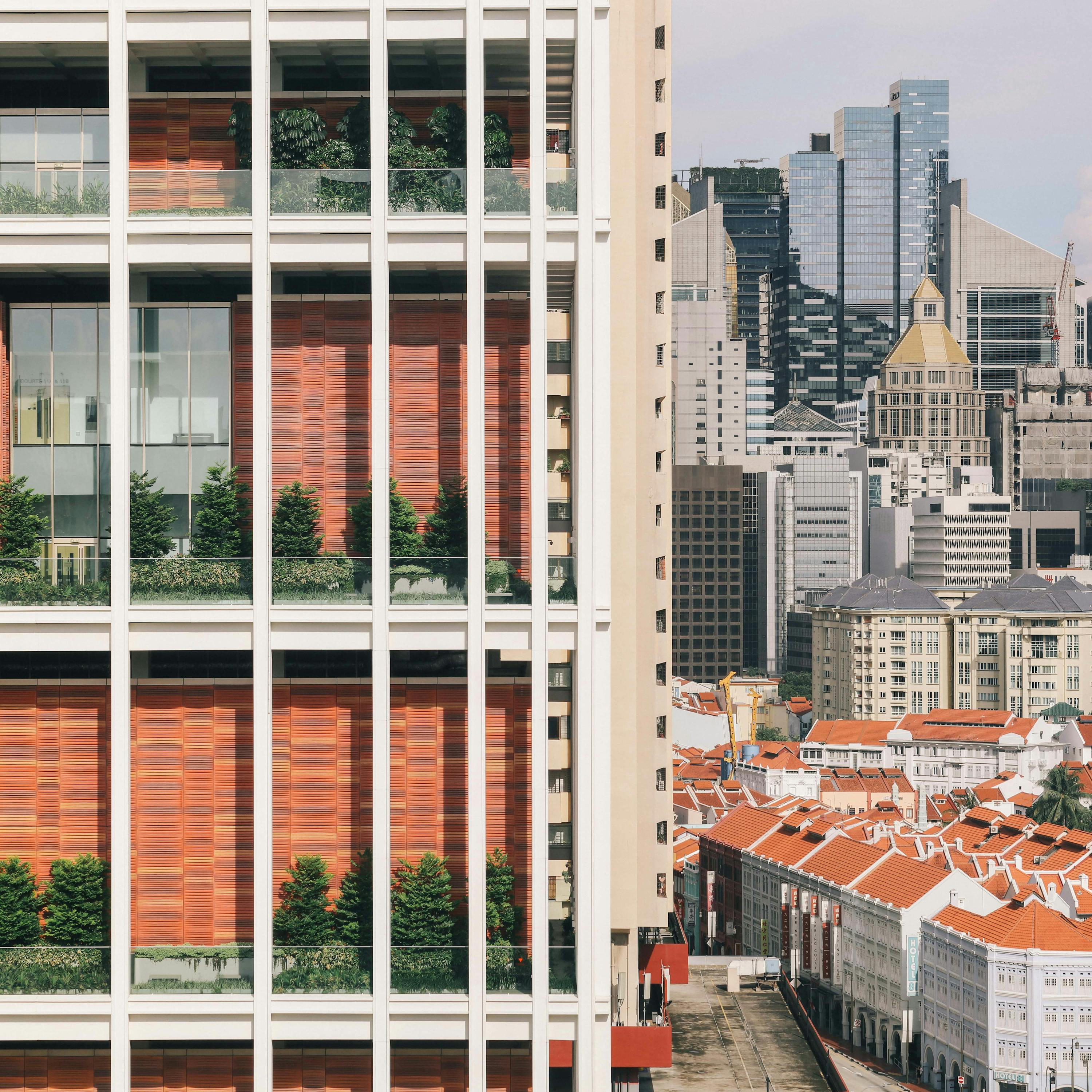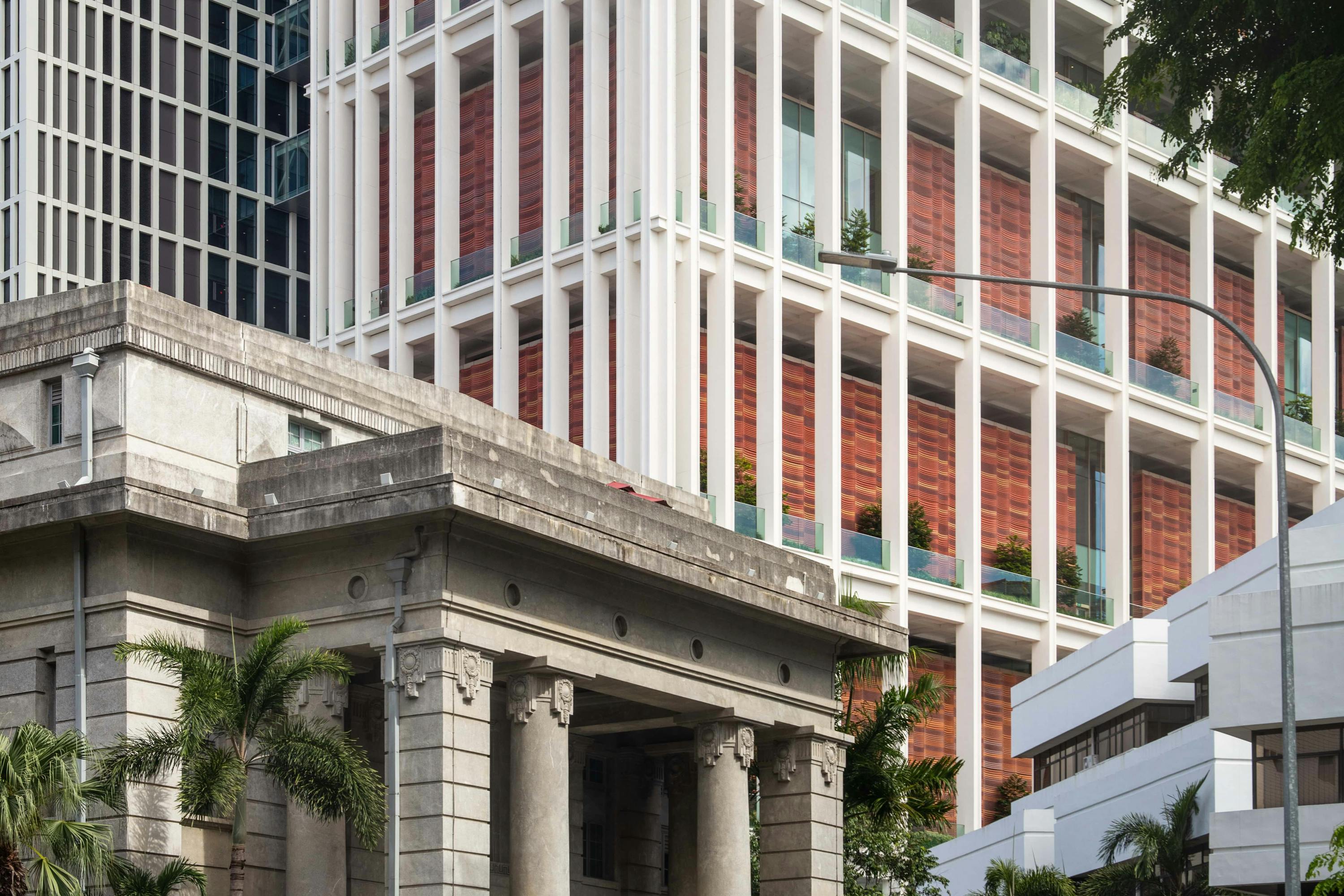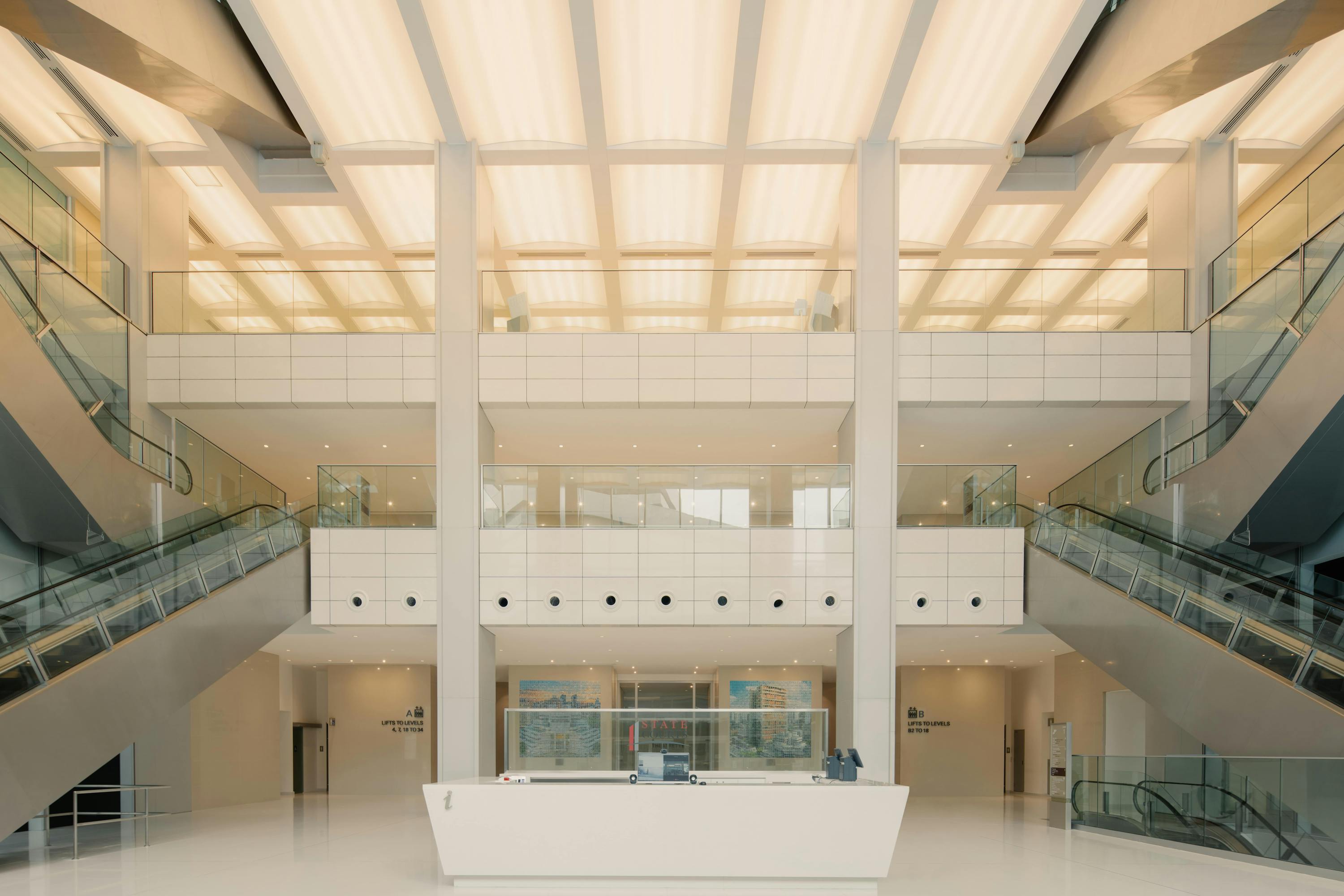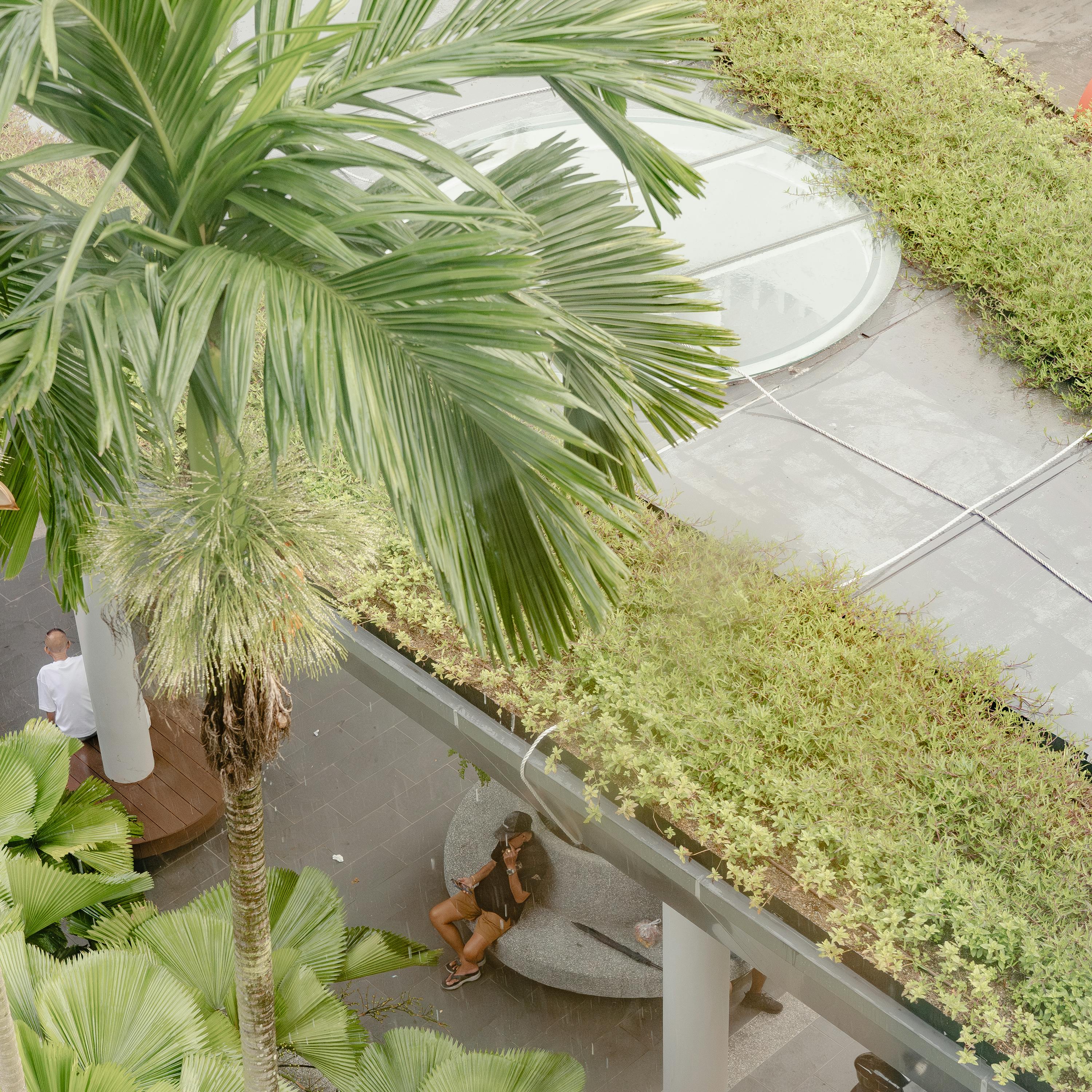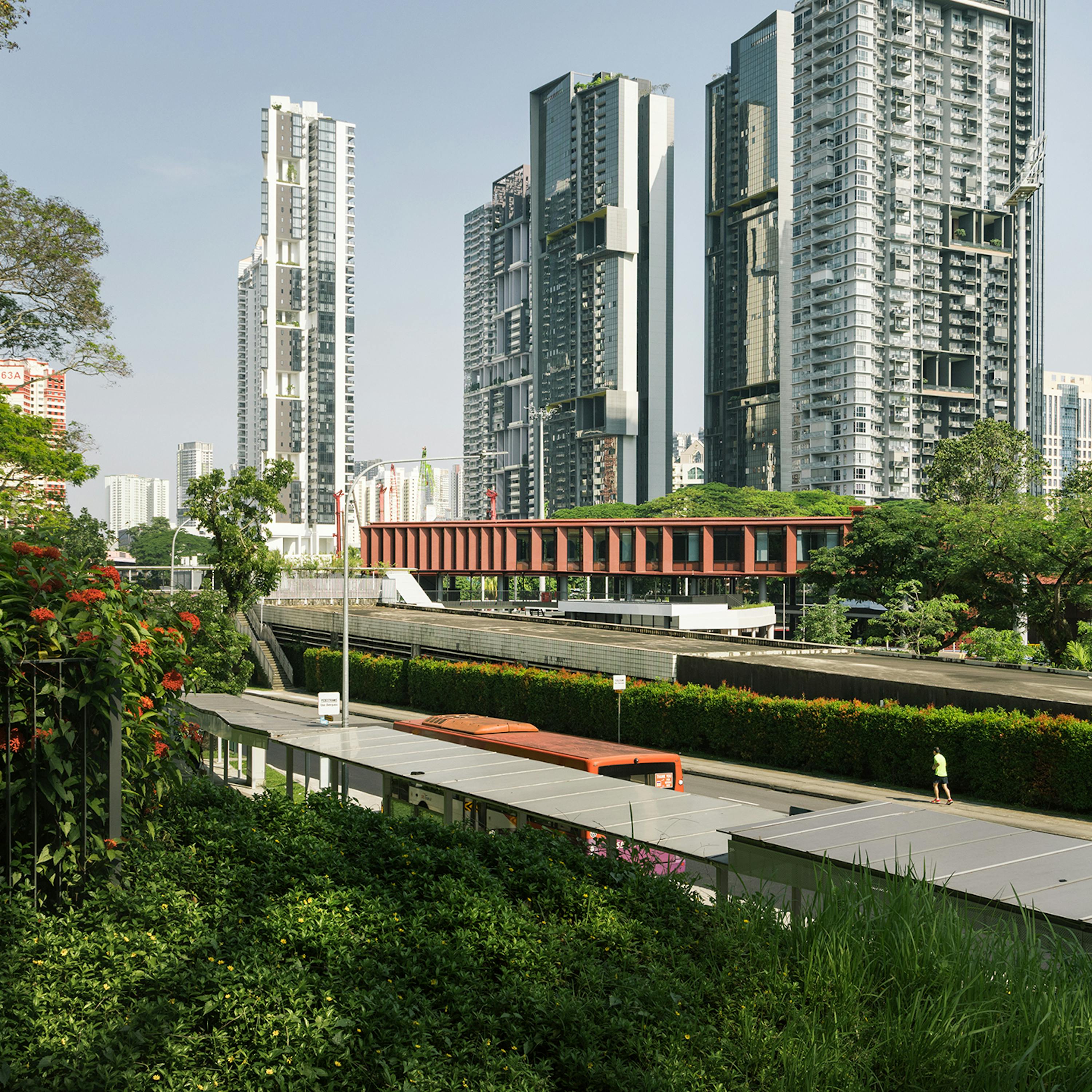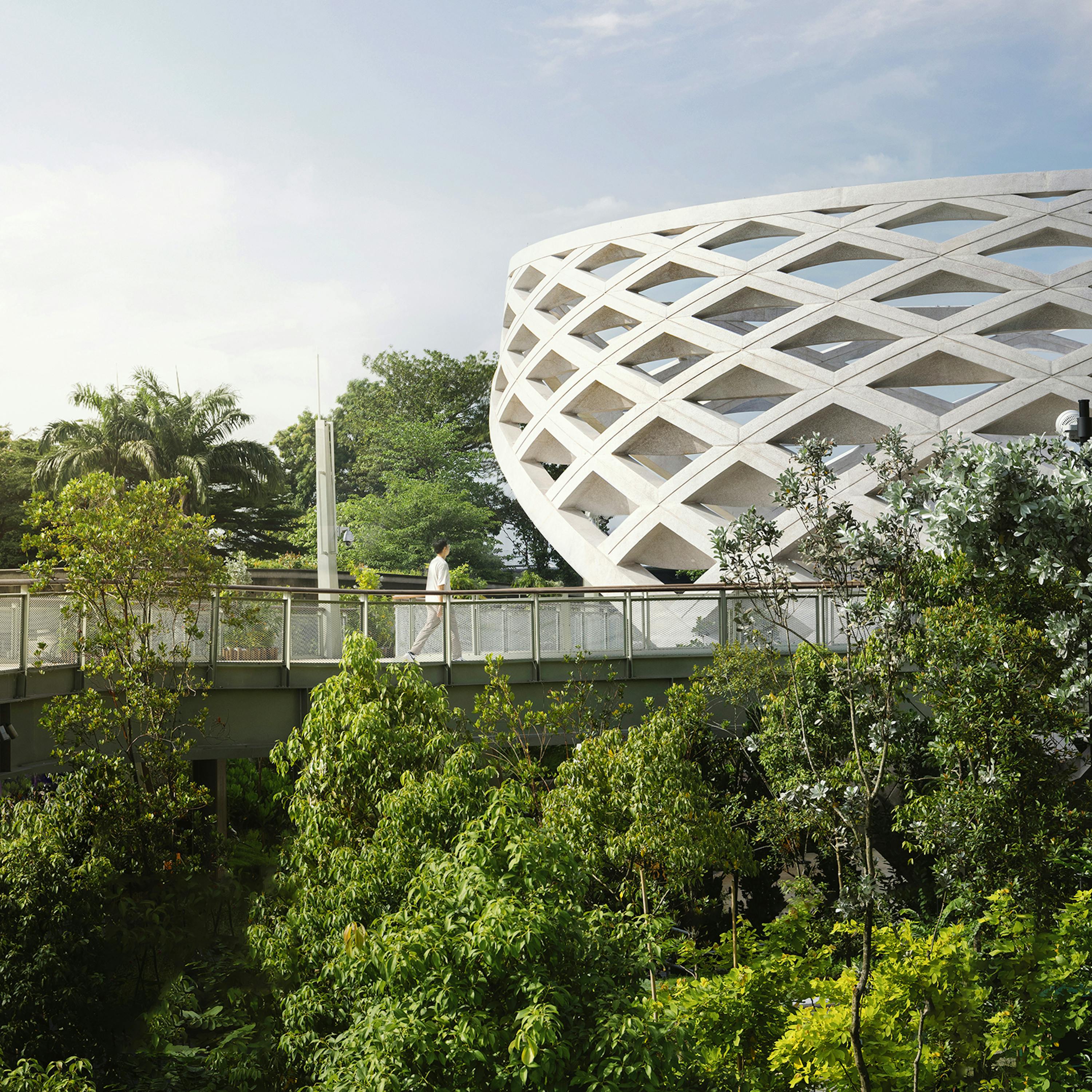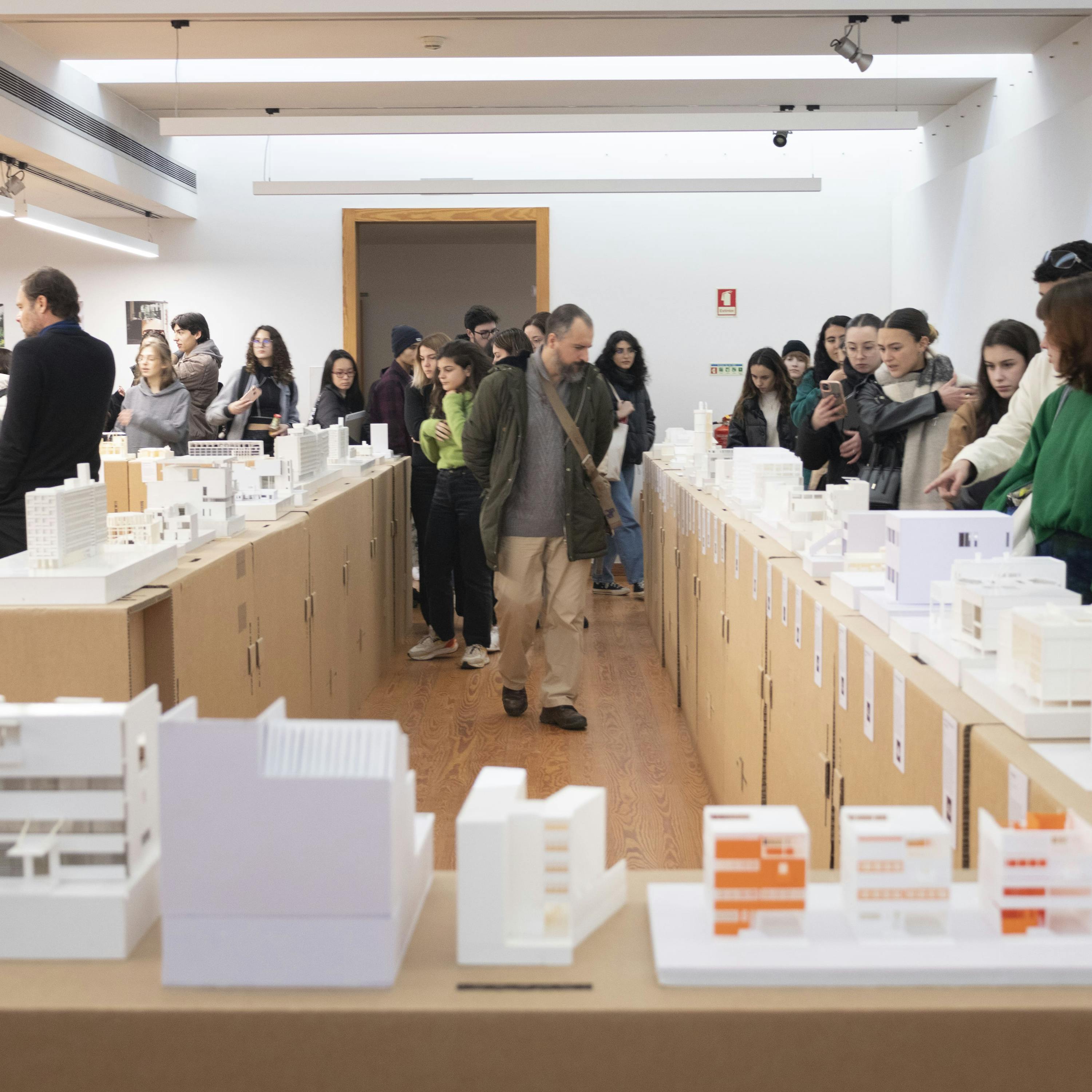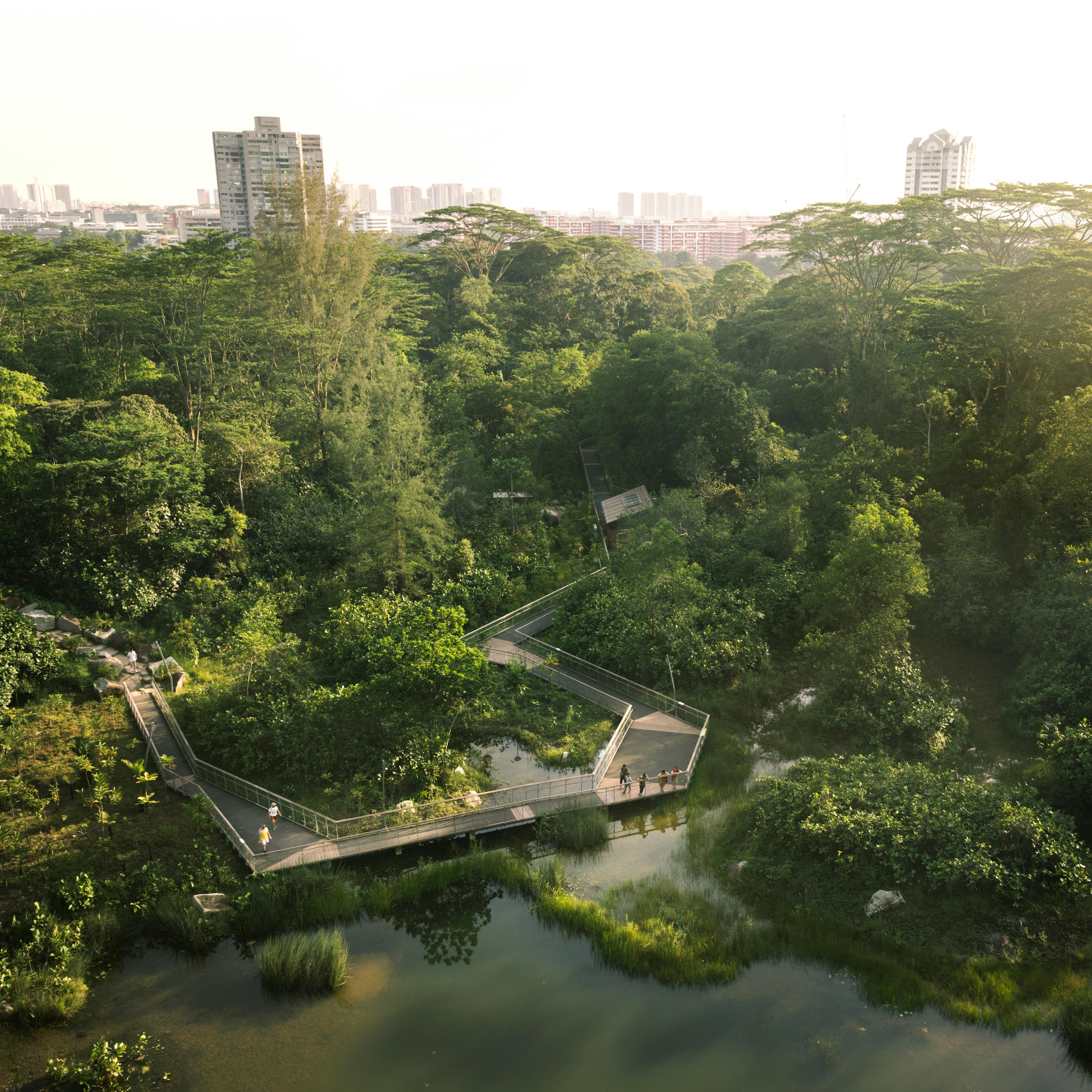State Courts: In the Balance
The architecture of order
My first visit was to Australia's iconic High Court, half of a brutalist twosome with the National Gallery in Canberra. Its cavernous interior approached up a long shallow ramp, and through a sheer curtain of glass, the building seemed open, if not friendly.
My second was Le Corbusier's High Court in Chandigarh, on the occasion of the city's 50th anniversary and an international conference headlined by Kenneth Frampton. Scrambling around the capitol complex, we exploited a rip in the fence, easing into the compound and a guard's warm embrace. 'Lots of architects sneaking in', he said and proceeded to guide us through the entire facility (including a meander through the Chief Justice's chambers), concluding with a nice cup of tea in the security office within the volume of the roof vaults.
Experiencing Singapore's State Courts is quite different. While superficially of the same school of concrete formalist architecture as the others – vigorous geometry contrasting sculpted forms - the building's scale is exceptional and its atmosphere enlightening rather than enfolding.
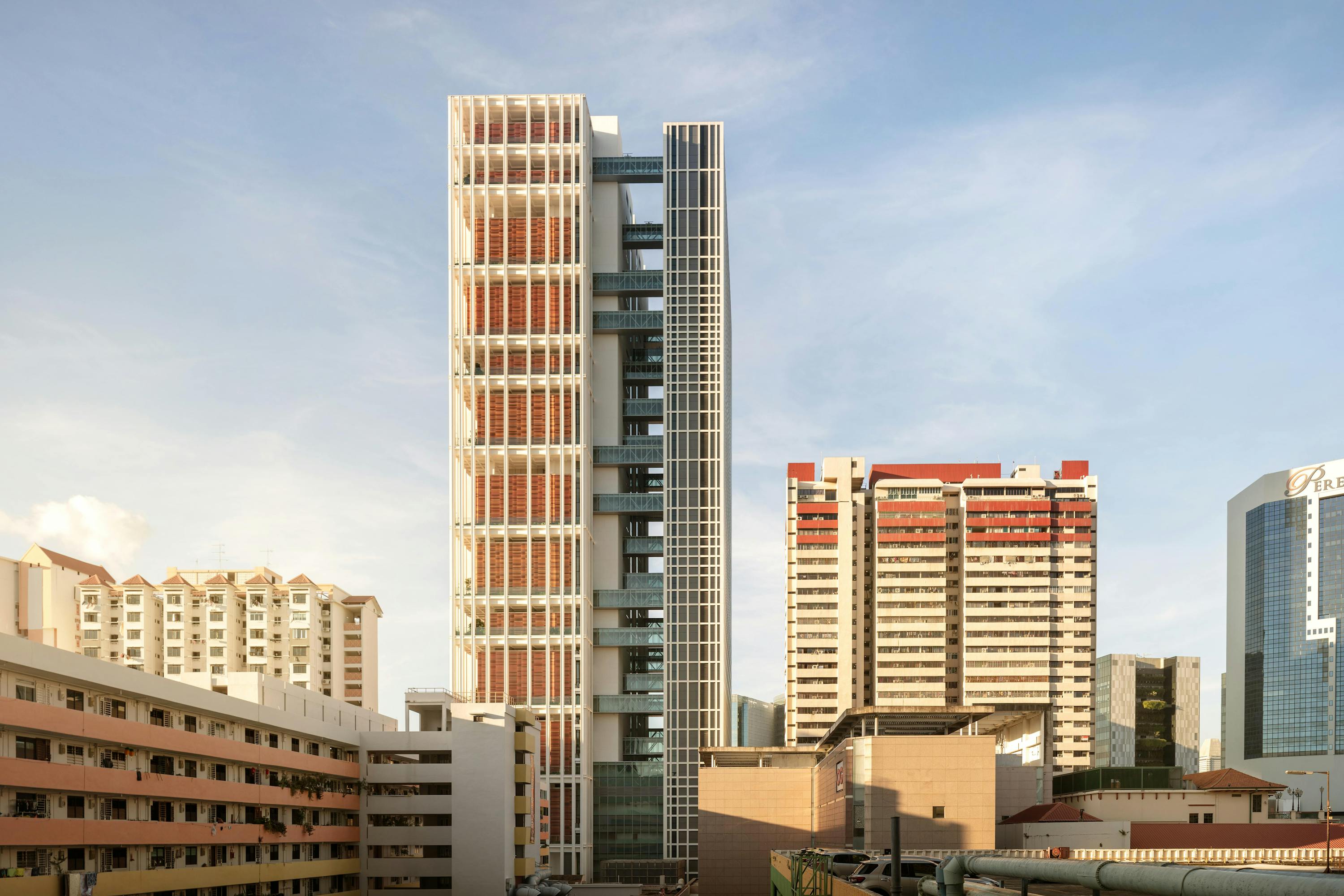
A highly legible composition
At a cursory glance, the building reads as a plain pair of slabs. The block facing the (former) Subordinate Courts houses 53 courtrooms. Variously grouped from two to six objects per multi-floor 'tray', the court box heights flex independently of their area, constrained only by the outer cage. The randomised bead-in-frame effect is abacus-like, perhaps alluding to deals transacted in the neighbourhood's endemic shophouses.
The back block, pinned from the front by trussed bridges that both separate and support, is for judges and court staff. Super-secure, as represented by its densely woven façade, it was not accessible for review. An accretion of other prisms - a garden-topped podium appended as the brief expanded, a core of lifts and toilets effectively obscured by the bridges, and an elegantly meshed service box – doesn't detract from the simplicity of the schema.
Surrounding buildings are referenced in finishes and form. People's Park Complex and Centre provide proportions, functionalist inspiration and a skyline in need of support. The Family Court's stately lamination of slabby shapes, dissolved at the corners, is explored in detail; the court tower's framing always restrained at the junctions. The granite-simulating pebble dashing of the older building is also imitated in the lighter floor finishes and moulded benching of the new.
The State Courts complete a cluster of justice buildings with the deco-classical Family Justice Courts and the dynamic Subordinate Courts - the 'Octagon', by Kumpulan Akitek. The space between the institutions is a tear of vehicular circulation, an oblique pedestrian passage enabled only by the new courts' extreme vertical extrusion. At the far end of this channel, VIP’s alight on Upper Cross Street - deliberately engaged with the bustle of OG and HDB’s across.
Experiential journey
An entry canopy falls like a drawbridge across the plaza, a top-lit square now abuzz with the security clearance queues. Litigants, lawyers and the affected public eventually enter a bright and lofty hall buttressed by a café and interpretive gallery. Escalators split on either side of the lobby, shuttling to the registry and the 24 hour mentions court on level 4. Lifts at the back deliver insiders directly to their destinations. Backstage, discrete interlocking pathways shepherd judges and those in custody, the three user-groups – community, judicial and custodial – visible to each other only in the courtrooms.
The floor plan of the court tower looks, from outside, to invert the pinwheel of its predecessor. In actuality, generous gathering spaces organise each floor. On landing, visitors are drawn through a tall volume between court boxes towards a framed view of the city. Redirected by glazing, they are nudged left or right into an internal corridor and ushered into the courtrooms.
The margin of garden space on a third of the levels is a place of retreat and relief from the interior's intensity. The bracing promenade harks back to Aalto's Paimio sanitorium, its ambition to strengthen bodies and straighten minds by immersing the afflicted in the vastness of nature. In the city context, strollers are also on show, chastened by exposure to reflect on their place in the scheme of things.
In detail
The deep red court boxes read differently with distance. From afar, they seem built from brickwork, perhaps the wire cut clay of common partitioning. Closer, fine terracotta ribs emerge, connecting to the roof tiles of Chinatown. Indoors, the boxes are revealed to be precast concrete, dusty with an admixture of rainbow colours. Their external appearance as cubic and distinct belies interior interceptions with floors and façade. An illusion of completeness is maintained by deft design –'tiles' stack past ceiling planes on the lower level of each tray but teeter away from the soffit at the top.
The fluted masonry, classically suggestive, is reprised inside the courtrooms by wall linings in two variants – one abundantly curved in plan, the other flattened into gradient-perforated veneer. Similarly, ceiling vaults are a device repeated throughout the building, with a consistent rectangular framework and options in scale and folding. Sizes vary from the back-lit barrels of the lobby, through flat coffers under the 'trays' to two folded types in the courtrooms.
The building's quality is a testament to a well-run selection process, balancing an architect of international insight with a firm of profound sectoral knowledge and ability to execute. Elaborated by subtle references to context and the traditions of civic architecture, the new State Courts nonetheless signal clarity and simplicity. In form, function and intention, the building achieves equilibrium, bringing calm and harmony to the city's heart.



